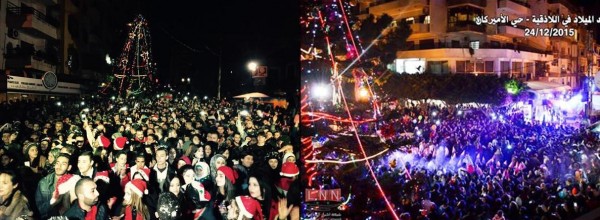2015 has proven to be a monumental year full of geopolitical surprises, with Russia’s anti-terrorist intervention in Syria being chief among them. The old world order is changing at a rapid pace as rising multipolar forces push outwards against the resistant unipolar establishment. Just as much as Russia, China, and Iran are endeavoring to change the global system, the US and its Lead From Behind proxies are ferociously fighting to retain it, and this engenders a serious escalation of geopolitical tensions that can appear to be largely unpredictable to many. Nevertheless, while accounting for unexpected developments that are always guaranteed to pop up, it’s still possible to identify some of the most impactful international processes that are currently reshaping the world and use them as the starting point for forecasting upcoming events.
The exercise is formatted whereby all of the Eurasian supercontinent is analyzed in five separate chapters. The first part of each section begins by describing the overall state of play there before pinpointing a couple key trends that have defined the past year there. Afterwards, it then segues into a forecast about where the aforementioned processes are headed and lists a few disruptions that could occur to offset the course of events. Whenever possible, it also highlights key geopolitical fault lines and hot spots that interested individuals can monitor throughout the coming year.
I Europe: State Of Play
The homeland of Western Civilization has seen its fair share of turbulence and destabilization throughout the past year, largely owing to the large-scale and purposefully intended geopolitical blowback of the US’ regime change operations in the Mideast. The overwhelming “refugee” crisis has unbalanced the origin, transit, and destination states, and in each instance, it works out to the US’ grand strategic advantage. Concurrent with the internal weakening of Europe via the ambitious demographic transformation that the US has been engineering over the past year, American control over the continent was also promulgated via the direct form of NATO expansionism. The establishment of NATO command centers in the Baltics, Eastern Europe, and the Eastern Balkans were a move in entrenching Washington’s supremacy over the EU. So as to safeguard its full-spectrum hegemony for decades into the future, the US also made progress in pushing forward the TTIP, a coercive ‘economic governance’ tool designed to prevent Brussels from ever negotiating any independent trade agreements outside of Washington’s explicit purview. In more ways than one, 2015 can be described as the year that the US made one of its strongest power plays against Europe ever since the end of World War II.
The “Refugee” Crisis:
This US-designed and Turkish-assisted operation aims to demographically plant the seeds for long-term identity conflict in key EU states, most of all Germany, so that Color Revolution-like social conditions can be manufactured upon demand as a form of ‘bottom-up’ pressure against any forthcoming uncompliant administrations. Along the way, the disruption that this created in the Balkans upset the social and political equilibrium (already tenuous as it was) in Serbia and the Republic of Macedonia, thus furthering the chaotic conditions under which American influence is best promoted.
Schengen Shutdown:
In a surprising about-face, Germany, the EU’s most fervent guardian of the organization’s supposedly ‘cherished’ principles, essentially dismantled the Schengen Zone in one swift move when it re-established ‘temporary’ border checkpoints with Austria. This was a direct repercussion of the “refugee” crisis and served to demonstrate the enormous pressure that it had placed on the EU if even its most staunch advocate and de-facto leader would be compelled to retreat somewhat from part of its long-standing ideological convictions.
Hyper Liberalism Is On The Run:
All told, Germany’s relative backtracking from hyper-liberal policies set the stage for its affiliated ideological adherents to do so as well. Sweden reintroduced border checks and said it would no longer follow its blanket-acceptance policy for “refugees”, while Denmark went as far as order the confiscationof money and valuables from “refugees” as compensation for their taxpayer-provided accommodation in the country. Tellingly, there’s no denying at this point that hyper liberalism is on the run and that EU-member states are generally tempering their previously blind conviction to such radical ideals.
Anti-Establishmentarianism Grows:
Growing elements of the public in some of the most key EU states are becoming increasingly disenchanted with their leaders and the former manner of handling affairs. This in turn has supported the rise of anti-establishment parties and voices all across Europe, with Le Pen’s National Front being the most recent posterchild. Syriza had the potential for manifesting such strongly held sentiment in Greece, but it discouragingly proved itself to be an alternative (albeit electorally exciting and rhetorically innovative) form of conventional establishment politics, showing that such movements can successfully be hijacked. The anti-establishment fraud of Viktor Orban is an excellent case in point as well.
Russophobia Is Revived In Full:
Ironically, while some Western, Southern, and Central Europeans are pushing back against the EU establishment (whether sincere in these efforts or fraudulently doing so like Orban and Syriza), their Eastern European and Eastern Balkan counterparts have fully embraced the historical hate of Russophobia and are actually playing a vanguard role in lobbying the rest of the establishment to follow their lead. Nowhere is this more evident than in US-occupied Ukraine, the Baltics, and Romania, but it’s also powerfully felt in Poland as well. Finland and Sweden have jumped on the bandwagon as of late, too, although they’re slightly (key word) less obsessive than their peers.
Europe: Where It’s Headed
Broadly speaking, Europe is becoming even less independent than it’s ever been before. Internal divisions between the elite and the electorate, and “Old Europe” and “New Europe” are evident in all ways, and it’s clear that the continent is undergoing a systemic transformation. The institutional (normative, political, economic, etc.) monopoly that Germany used to have over its subordinates is now lessening to a degree, and this is creating opportunities for other aspiring leaders to assert themselves in their respective historical spheres. The consequence of this process is the fulfillment of the Intermarum project of dividing Europe from Russia by means of a contiguous belt of Russophobic and German-skeptic states stretching from Sweden to Romania, and considering recent developments, one can even include Turkey into this geopolitical construction. The Intermarum has already succeeded in cancelling South Stream and suspending Balkan Stream, and it’s thus predicted to strike at the third and last large-scale prospective energy project that remains, and that’s Nord Stream II. Poland, now equally Russophobic and German-skeptic under the PiS leadership, is leading the Intermarum’s charge against this pipeline, and while it’s uncertain whether or not they’ll full succeed, it’s already self-evident that it’s created a polarizing problem that is turning anti-Russian “New Europe” even further away from their “Older” peers.
The “New Europe”-“Old Europe” Divide Widens:
For the reasons explained above, the Intermarum members of the EU will continue moving progressively further away from Germany and Western Europe. Normatively speaking, they will publicly espouse of a form of “conservatism” that stands at odds with “Old Europe’s” traditional liberalism, and the attractive appeal that this has will pressure the latter to continue moderating its policies so as to ideologically compete in this changing ‘values-based’ environment (which includes promotion of the Russophobic “value” as well).
France Splits From Germany:
Paris has largely been seen as the junior partner to Berlin for quite a few years already, but that’s all beginning to change nowadays. While Germany will clumsily try to ‘balance’ between progressive and so-called ‘conservative’ ‘values’ and embarrassingly fail in doing so, France will bunker down in support of the liberal rhetoric that normatively endears it to the general public in the PIGS states of Southern Europe. France wants to carve out its own sphere of influence along the Mediterranean, but this of course isn’t anything new in fact.
What’s changing, however, is that France is differentiating itself from Germany in rhetorical, economic, and military manners, with the latter evidenced by its enthusiastic role in the Wars on Libya and Syria. Paris’ recent moves against Syria are the reason why Berlin felt compelled to up its aggression there as well and play catch-up, in probably the first-ever observable instance in a very long time of Germany undoubtedly following France’s lead. Although far-sighted as of now, there is of course the potential for this to create an intra-EU division between the bloc’s two leaders that would hamper its already-derailed efficiency and inadvertently facilitate the continued rise of the Intermarum.
The Underbelly Bursts:
The Balkans are under tremendous and unprecedented pressure as a result of the “refugee” crisis and the chain reaction of distrust that this unleashed between most of its regional states. The only two that are not presently in some sort of spat with one another are Serbia and the Republic of Macedonia, the geo-critical members of the Central Balkans that incidentally are the key transit points for China’s Balkan Silk Road project. They are, however, exceptionally vulnerable to internal destabilizations within their borders, brought about by a combination of Color Revolution technology, “refugees”, and Islamic-affiliated terrorism (most likely practiced by the Albanian ethnicity). Macedonia’s upcoming early elections at the end of April 2016 present a perfect scenario for reheating the frozen Hybrid War attempt from last May via a renewed Color Revolution/Albanian Unconventional War combination.
Montenegro’s people are also presently struggling to free themselves from Djukanovic’s yoke, urgently realizing that the longer they reside under his decades-long rule, the more their traditional spiritual and geopolitical identity is being eroded. The protest movement in this country could potentially escalate into a civil war if excessive state brutality continues to be used. It’s not for sure that this will happen, but it can’t of course be discounted. Montenegrins know that they absolutely must act before their country formally joins NATO in order to preserve their Orthodox Christianity and historically fraternal ties with Russia, while similarly the ruling clique understands how imperative it is for them to make sure NATO membership happens so as to destroy these two forms of national identity. The friction between the two could realistically give way to all-out conflict between both parties, ergo the fears of civil war.
Finally, Bosnia is being pushed into an unbearable domestic crisis, with Sarajevo obsessively doing whatever it can to infringe on Republika Srpska’s sovereignty. The country is currently in its worst crisis since the end of the 1994 civil war, as the Serbian representatives proudly cut ties with SIPA, the nation-wide court and prosecution organ, in protest after the latest blatant infringement against their entity’s sovereignty. The US is pushing the country back to the brink of warfare, seeing the incitement of regional violence as dually accomplishing the goals of sabotaging China’s Balkan Silk Road project through the enticement of Serbian involvement and the resultant geopolitical consequences this will entail and weakening the EU via an explosion of conflict and a renewed humanitarian crisis. As with the previous forecasts, it’s not for sure that this will fully transpire as feared, but the signs are undoubtedly there that this is a trend that should surely be monitored in the coming months. In all three instances, the use of terrorism could be strategically applied in order to set off a domino chain of destabilization.
Europe: Disruptors
The following are three events that could change the game in Europe:
Belarussian Backstabbing:
Lukashenko has been cozying up quite close to the West over the past year, having gained enough of their approval to even have some of the sanctions suspended against his country. It’s not known whether there’s a link between the two, but it was also around that time that Belarus began fussing about the air base that Russia had purportedly wanted to open up there. While Moscow publicly appears unmoved by the stalemate, it’s bound to have resulted in the Kremlin reconceptualizing the nature of relations that it has with its nominal “ally”. The West wants nothing more than to drive a wedge between the two and Russia is fully aware of this, hence why it doesn’t publicly respond to Lukashenko’s ego-tripping outreaches to Europe, but it’s possible that the Belarussian leader might overstep his position one day and disastrously himself in a situation where the West prompts him to choose sides. Predictably, he may let his ambitions of personal glory get the best of him and opt to join forces with the West if the economic price is right, and doing so would completely disrupt Russia’s post-Soviet integrational projects with the Eurasian Union and the CSTO.
Ukrainian Uprising 2.0:
First written about in August, the author still holds true to the thesis that Ukraine is progressively becoming more susceptible to a legitimate people’s revolution against the Kievan authorities. Whether it’s of Neo-Nazis turning on their former patrons, the country’s disparate regions pushing for federalization, or average citizens that have just plain had enough of the economic and physical destruction of the past two years, it’s more likely than ever that some sort of domestic disruption aside from a renewed civil war against Donbass (which is also a possibility) could occur. No matter which form it takes, this would instantly become Europe’s number one foreign affairs priority and would temporarily reorient (or rather, disorient) attention from the Mideast back to Eastern Europe. The effects that this would have on the New Cold War are dependent on the circumstances under which this event transpires, so if it’s a civil war against Donbass, it would be to Russia’s disadvantage, but if it was a patriotic rebellion against the Western-controlled government, then it would play to Russia’s benefit.
Croatian-Serbian Conflict:
The last disruption that might (but does not necessarily mean it will) happen would be a Croatian-Serbian War provoked by a breakdown of stability in Bosnia and exacerbated by both sides’ current missile race. For the moment, this isn’t doesn’t seem to be a likelihood for 2016, but the odds could turn against this forecast’s favor if unexpected developments (i.e. Western-supported terrorist attacks) break out in the country and quickly unravel the peace between all parties. A domestic destabilization in Bosnia, Serbia, Montenegro, and/or the Republic of Macedonia (separately or in some sort of combination) would be unsettling enough for the EU and would already greatly undermine whatever remaining independence (mostly in name only at this point) it retains, but a conventional state-on-state conflict between two Balkan nations would maximize the respective effects even more.
II Eurasia: State Of Play
In this context, Eurasia refers to the former Soviet space and concerns Russia’s reintegration efforts over this wide region. Belarus and Ukraine were already mentioned in the previous section, so this one speaks on the Russian Federation itself, the Caucasus, and Central Asia. Overall, one can see that Moscow has successfully consolidated its position, although two significant holdouts refuse to enter into pragmatic cooperation with it. These are Georgia and Uzbekistan, with the latter engaging with Russia through the SCO but not at all in the formerly close nature that it once did when it was part of the CSTO. These two states are the US’ ideal points of strategic entry in their respective regions, and more progress has been made on this front with Tbilisi than Tashkent. Other than the competing institutionalism between the Eurasian Union and EU in the Caucasus and Uzbekistan’s stubbornly ‘independent’ position, things in general have been very positive for Russia. The Pivot to Asia is proceeding apace, although of course this is a long-term strategic complementary diversification to Russia’s foreign policy and will take a lot more than a single year or two to physically actualize. That said, the commencement of the first-ever Eastern Economic Forum in Vladivostok was a welcome sign, and Russia looks to be advancing towards the fulfillment of the “Asian Sea Arc” project in enhancing maritime trade with ASEAN.
Eurasian Union Enlargement:
2015 was important for the Eurasian Union because it saw the formal incorporation of Armenia and Kyrgyzstan into the economic bloc. This gave the group a presence in the South Caucasus and expanded its position along the Chinese border, along with bequeathing it with the institutional experience necessary for managing future enlargements. The fact that both of these cases proved to be a success without any notable problems or bottlenecks demonstrates that the Eurasian Union is working effectively at its highest levels.
Tbilisi’s Intransigence:
Armenia is formally a member of the Eurasian Union and CSTO and rival Azerbaijan has been moving a lot closer to Russia over the past year, but Tbilisi has yet to improve its ties with Moscow. President Putin said during his yearly press conference recently that he’s ready to move forward with this process, provided that his Georgian counterparts seize the moment and move forward with him, but despiteformally agreeing to his visa-abolishment proposal, they seem unwilling to moderate their pro-NATO stance. Earlier this year, the military bloc even opened up a joint training base in the country, demonstrating the extent of influence that Brussels has over Tbilisi at the moment. When speaking of Brussels, that can be taken in more ways than one, since Georgia still wants to join the EU, which has the distinct possibility of creating a customs crisis in the Caucasus in the future.
CSTO/SCO Security Interplay In Central Asia:
Both integrational organizations rehearsed their contingency planning for dealing with a breakout of terrorist violence in Central Asia. ISIL’s expansion to Afghanistan and the Taliban’s latest propensity for renewed offensives raises the risk of chaos spilling across the borders and into the former Soviet periphery. Thankfully, as The Saker noted in his detailed piece from May, Russia has hardened her southern border and is prepared for dealing with most conventional scenarios that could transpire. China’s involvement vis-à-vis the SCO is important as well, since Beijing has enormous energy and forthcoming market interests there that it is eager to have defended.
The Caspian Takes Central Stage:
Complementing Russia’s anti-terrorist intervention in Syria, the Caspian Flotilla has played a very strategic and supportive role, one which transcends its counter-terrorist success and sends larger statements to the rest of the world. Russia is signaling that the inland lake, previously written off by Western military ‘experts’ as near-useless in the modern-era, is actually quite an advantageous position for launching operations in the Mideast and potentially even Central Asia. The munitions that were used surprised and the accuracy with which they were fired surprised Western observers and proved just how wrong they were in earlier harking on about Russia’s ‘decrepit’ naval resources.
The Pacific Pivot:
Russia has resolutely shifted a large amount of its formerly European-concentrated attention towards entering into tighter relations with the Pacific economies, specifically in ASEAN. Working with China is wonderful, but by itself it cannot function as a full-on pivot unless diversified to other partners as well. Vietnam forms the lynchpin of Russia’s ASEAN strategy, but even this could be endangered due to its partner’s cooperation with the US-led TPP. Be that as it may, Russia has clearly demonstrated its intent to engage the Pacific states and re-establish a mild presence in the region, be it in the diplomatic,military, and/or economic senses.
Eurasia: Where It’s Headed
The present security configuration in Central Asia is disproportionately dependent on the continued and stable rule of the countries’ leaders, but with transitions being inevitable sooner or later due to the advanced age of the various Presidents, it’s possible that everything Russia has worked for could become undermined if this changing of the guard descends into a bloody inter-factional battle. This isn’t so much a risk in Kazakhstan, and one could even perhaps say in Tajikistan (which has the memory of a recent civil war behind it), so much as it is in Uzbekistan, where the clan-based nature of society is prime for external manipulation. There are only two ways in which power transfers can take place in these three states, and that’s through de-facto ‘succession’ (the predecessor appoints a political heir before passing and/or stepping down) and/or a Color Revolution, both of which could intertwine once a ‘successor’s’ legitimacy is put to vote afterwards. These destabilization scenarios could occur at any time, not just next year, but because they the situational trip wire might be broached with one of the elderly statesmen’s passing, it’s worthy to have offered those view words about the possibility.
The Russian-Iranian Strategic Partnership Integrates Azerbaijan:
Long seen as the West’s prized partner in the Caspian, 2015 saw a remarkable cooling of Azeri-Western relations over the latter’s strong criticism of Baku’s human rights record. While political and non-energy economic ties (e.g. EU membership) appear to be at a standstill, oil and gas still flow unimpeded through its territory, and Azerbaijan is expected to be the main source for the EU’s anti-Russian Southern Energy Corridor. Interestingly enough, Azerbaijan has moved considerably closer to both Russia and Iran in the past year, excitedly raising the prospects that a trilateral partnership between the three (perhaps via the North-South Corridor) could neutralize the unipolar intentions of the US and EU and flip Baku into a becoming a multipolar pump of energy influence towards the West. Of course, the US would never allow Azerbaijan to become a strategic weapon against it, Turkey, or Israel’s interests (the latter of whichreceives 40% of its oil needs from the country) without some sort of Color Revolution disruption first, so as this realignment scenario moves forward, one can simultaneously expect more Western hostility towards Azerbaijan and friendly outreaches towards Armenia.
Barbarians At The Turkmen Gates:
The author wrote a prognosis in summer 2014 about the institutional vulnerability that Turkmenistan has towards any ISIL-like offensive streaming across its joint border with Afghanistan, and the assessment is still very relevant going into 2016 (and it could also affect Uzbekistan and Tajikistan too, especially if they’re in the midst of their own domestic crises at the time). Just in October there was an incident with the Taliban being caught in no-man’s land along the Turkmen border, and as the terrorist group regroups for what seems to be an imminent series of offensives earlier next year, it’s likely that their presence will only increase along the shared frontier. Any spillover of terrorist bedlam into Turkmen territory could quickly lead to a spike in global energy prices, principally because the world’s second-largest gas field in Galkynysh is very close to Afghanistan and could be affected by the turmoil. Even if the terrorists don’t occupy or destroy any of its facilities, but simply make a move in that direction, it’s predictable that gas prices (and in turn, perhaps even the oil prices to which they’re pegged) could increase, since speculators might prepare for Beijing to commence the emergency purchase of LNG to substitute for any forthcoming disruptions from its main foreign energy supplier. Although the LNG sales would take time to finalize and deliver, if a China made a large enough play in this market at a single, concentrated time, then it would inevitably have an impact on price.
Russian-Japanese Outreaches:
While it may seem unlikely to many, there’s a strong chance that the two sides will engage in behind-the-scenes diplomacy to pragmatically rectify their outstanding bilateral issues (if they haven’t begun such talks already). Shinzo Abe is indisputably a pro-American stooge that’s currently overseeing one of the US’ most cherished Lead From Behind proxies, but there are still apolitical non-governmental interests that are eager to intensify ties between the two. Russia’s Pivot to Asia needs foreign investment and management experience in order to be fully successful, hence the reason why Vladivostok and the nearby environs were recently declared a free port in order to assist with this. It’s not to suggest that a breakthrough needs to be reached on the Kuril Islands issue in order for this to happen either, as the only thing that needs to occur is for the profit-minded business elite in Japan to successfully lobby their government backtrack on their unreasonable anti-Russian policies out of economic motivations, convincing them that there is more self-interested gain in working with Russia than working against it.
From the Russian perspective, aside from the Far Eastern foreign investment interests that it has, Moscow would like to strategically and pragmatically diversify its Asian Pivot beyond China and to the Pacific’s third-largest economy, Japan. Additionally, some in the Russian establishment conceivably hope that progress could be made in exporting the country’s resources to the energy-deprived island chain. On a grander level, the Russian-Chinese Strategic Partnership tacitly implies that both sides can cooperate with the other’s rivals (in this case, Russia working with Japan just as it does with Vietnam and India) out of the shared vision of using its newfound position to promote its partner’s interests wherever possible. This policy doesn’t always work as theorized and isn’t infallible, but the general concept is that each of the two trusts the other enough so as not to be perturbed by their external dealings and to never suspect treacherous intentions from them. If anything, such interactions can boost the cohesiveness of the Russian-Chinese Strategic Partnership, but this is only because of the unique nature of their bilateral relations. The same template, for example, can’t be superimposed on Russian-Belarussian relations, as was earlier discussed.
Eurasia: Disruptors
Other than the Hybrid War regime chance scenarios touched upon earlier, here are several ways in which the ongoing trends in Eurasia could severely be disrupted:
Nagorno-Karabakh Continuation War:
This was previously elaborated upon by the author before, but it still remains an ever-present possibility. The specifics of a 2016 scenario would probably be a bit modified than what was earlier written, making due for the changed geopolitical position of both Armenia and Azerbaijan. Russia’s Eurasian Union and CSTO ally is moving towards the West at the same time that the West’s energy-exporting bastion is looking towards Russia and Iran. While Azerbaijan routinely threatens Armenia and continuously boasts about its military potential, it realistically doesn’t seem inclined to provoke Russia, which has a contingent of troops based there. It’s possible that a second hurrah of Western influence and/or false-flag provocations could be used to lure Baku into this anti-Russian trap, but it’s more feasible that a second round of Color Revolution fervor would hit Armenia and destabilize its government. In the event that it falls to Ukrainian-style hard-core nationalists, then the presumably pro-Western authorities that would take their place could likely initiate the catastrophic scenario on their own, thereby opening up a new anti-Russian hot front in the New Cold War and potentially turning Moscow and Baku against one another.
Uzbekistan Goes Full-On Rogue:
Islam Karimov has been somewhat courting President Putin’s approval over the past year, trying to convince him that Uzbekistan isn’t going to totally turn against Russian interests and actively disrupt them in the region. The Russian leader visited the Central Asian state in December 2014 and wrote off some of its debt, and he even invited Karimov to visit Russia after the two met in Ufa over the recent summer. Still, these friendly and welcome outreaches don’t change the fact that Uzbekistan is looking to warm up its military relations with the US and potentially becomes its Lead From Behind partner in the region in exchange. Uzbekistan might even be under some form of implicit blackmail, getting the hint that failure to work with the US would guarantee that a Hybrid War scenario breaks out after Karimov’s passing. Whatever the reason may be, there’s plenty of reason to suspect that Uzbekistan could one day play a similarly anti-Russian position as its unipolar Ukrainian and Turkish counterparts presently do.
Japanese-Russian Naval Tensions:
Disturbingly, it appears as though the world has entered a renewed era of naval tensions, with the East China Sea, South China Sea, and Turkey’s foreboding potential in the Bosporus being the prime examples. In a similar vein, it’s possible for the US to command its Japanese satellite to enact a comparable provocation against Russia just as it does against China at the moment. It’s not guaranteed that Japan would fall for this bait, but Abe might be tempted to go along with this in order to create the ‘convincing’ justification that Japan needs to unreservedly and immediately revise its pacifist constitution. Staging some kind of stunt in the Kuril Islands would create the global fanfare necessary to ride the anti-Russian wave into general international (Western) acceptance of his actions, and it might even be enough to scare the Japanese population into largely accepting his dictates on this matter. The media-manipulated and absolutely false perception of Russia and China ‘teaming up’ against Japan would also excite American military planners into beefing up their presence in archipelago on the fabricated grounds of ‘protecting an Asian democracy’.
III Mideast: State Of Play
The latest year was one of the most historically transformational for the region ever since the 2003 US War on Iraq, with the argument perhaps being made that 2015 was even more impactful because it heralded Russia’s long-awaited return to the Mideast and the formal (key word) end of the US- and Israel-manufactured Iranian nuclear ‘scare’. There’s no debating that the entire regional paradigm was turned upside down by these two developments, and the author’s earlier analysis about “The New Middle East: Russian Style” goes in-depth by explaining what’s changed and what it will likely lead to. Therefore, this section is mostly a reiteration of that research, albeit partially modified for the specifics of the 2016 Trends Forecast. Other than these two globally renowned events whose impact doesn’t require any further explanation beyond the afore-cited link, there were three other developments that marked the key Mideast processes of 2015:
The War On Yemen:
Saudi Arabia fell into a tantalizing trap after it decided to invade its poorer and comparatively weaker neighbor to the south. The Ansarallah had been waging a liberation struggle against the pro-Western and Saudi-imposed proxy that was controlling the country, but the Saudi establishment fell for their own prejudices and sincerely thought that this was some sort of covert Iranian conspiracy against their interests. That definitely wasn’t the case whatsoever, but the fact remains that this paranoid fear is what prompted the Kingdom to enter into what could indisputably be labeled as a quagmire right now. In the over 9 months since their bombing campaign and invasion started, Saudi Arabia and its contracted GCC allies and other mercenary partners have not been able to achieve their main objective of defeating the Ansarallah and regaining total control over the country. In response, the Saudis felt pressed to further internationalize the War on Yemen under the pretext that it’s a subsect of the larger “War on Terror”, hence the recent creation of the Riyadh-led “anti-terrorist coalition” (examined in-depth by the authorhere). Going into the new year, there’s no concrete indication yet of whether or not this will change the Saudis’ disastrous fortunes and be enough to turn the tide of the war to their favor, although it will likely fulfill some role in trying to do so.
Kurdistan Calling:
Having been predicted years ago and previously with much Western backing (although now with possible Russian-Iranian support as well), it now looks like the time has come for “Kurdistan” to take on a heightened international role (even if sub-national and spread across Syria-Turkey-Iraq). The Iraqi Peshmerga and Syrian-based Kurdish militias have been very successful in fighting against ISIL, and this has won them international approval from all forces except Turkey, which is fearful that this sizeable minority group (estimated to be around a quarter of the country’s population) may rebel against Ankara once more for increased rights, representation, and perhaps even autonomy or independence. It was this fear, combined with Erdogan’s catastrophic electioneering efforts, that led to Turkey provoking the Kurds into restarting their military operations against the state, all with the intent of sparking a preplanned offensive to cripple that ethnic community. The resultant Turkish Civil War that followed and Erdogan’s divisive efforts to split the transnational community by buying out their Iraqi counterparts will obviously be major factors in determining the legal status of transnational “Kurdistan” in the coming future.
Turkey Backstabs Russia:
One of the most dramatic events to happen ever since the end of the Old Cold War occurred when Turkey shockingly shot down a Russian anti-terrorist bomber over Syria. This unparalleled aggression was especially jaw-dropping given that the two sides, despite their disagreements over Syria, were steadily moving towards a pragmatic partnership with one another. In the aftermath that followed, Russia maturely resisted the legitimate urge for war that it had and patiently set about planning the long-term destabilization of Erdogan’s government, with travel and trade sanctions being but the first counter-salvo in what is expected to become a protracted proxy struggle between both sides. The US ultimately benefits from this, but curiously enough, it also seems inclined to passively turn a blind eye to what Russia might be planning against Turkey, with the afore-cited link providing more details about this interesting development.
Mideast: Where It’s Headed
The Mideast will continue its geopolitical transformation in the coming year, with ongoing events helping to reshape its overall contours. This next year will be but one in a series of several coming more that will determine what will then be the lasting status of the Mideast. This transitional time is turbulent and racked with violence, and it can be said to have begun in earnest in 2014 with the rise of ISIL. It’s not known exactly when this period will end, but the region could realistically stabilize by 2018 or 2019, depending of course on whether or not key pillars (Turkey and Saudi Arabia) implode, which in that case could indefinitely prolong this history-making era.
Reaching A Syrian Settlement:
The dynamic interplay of various global forces that have converged over Syria is totally unparalleled in recent history but also completely untenable in its present form. There are now three coalitions nominally fighting terrorism in Syria (with only the Russian one being sincere in its stated objective, while the US- and Saudi-led ones actually support terrorism) and a slew of foreign aircraft flying over its skies. The accelerated diplomacy that’s been happening as of late indicates that all sides want to see some sort of settlement soon, likely agreed to by the middle of next year, in order to de-escalate and pull back from the brink of all-out conflict. Each side will probably resort to non-conventional means to support their given side(s) after the conventional de-escalation begins, meaning that any possible surface indication of a settlement might be illusory and misleading. Nonetheless, it seems like an agreement between most of the Great Powers currently involved in the war in one capacity or another will come sooner or later, and it’s very probable that 2016 will be the year they finally hammer the details out.
It’s impossible at this moment to fully articulate a post-conflict vision for Syria since so much is dependent on the Race for Raqqa. The respective coalition that gains control over ISIL’s ‘capital’ will have a deciding voice in stipulating the constitutional direction of the country afterwards, and with that document’s legal revision being a central element of the UNSC’s conflict resolution efforts, it means that control over this city will be pivotal. The US would ideally like to create a transnational sub-state “Sunnistan” (likely through a ‘federal’ model) between eastern Syria and western Iraq in order to revive the Qatar-Turkey gas pipeline that had originally been at the root of the war in the first place, while Russia and Syria want to preserve the unity of the state. It’s appropriate at this moment to remind the reader that Turkey’s recent invasion of northern Iraq was likely meant to further the goal of a “Sunnistan” in that theater in anticipation of a complementary unit being constructed in Syria.
Turkish Turmoil:
The author has written about this on many occasions before, but the gist is that Turkey is leaping towards an all-out domestic crisis as anti-government sentiment spikes and the Civil War wages on. With Russia now opposed to Erdogan’s government, it’s likely that it will take some moves to increase the level of domestic dissent against the authorities (e.g. sanctions and potential gas disruptions), but it must be reminded that Turkey’s present turmoil is all Erdogan’s fault. A dangerous cocktail of destabilization is now brewing inside the country, and it’s very probable that the civil war could spill over out of the southeast and into the heartland and/or coastal areas. It doesn’t even have to be Kurdish-inspired in this case, as if the legitimate institutional opposition continues to feel oppressed to the strong degree that they presently do, some of their members might peacefully organize against the government. If the state brutally crushes their demonstrations (which is all but guaranteed), some of the protesters might resort to taking up arms against the government, with a few possibly linking up with radical left-wing militants in the process. As violence spreads across the land, Erdogan might feel compelled to enact a wide-ranging martial law decree, but doing so would also place the military in a heightened position to enact a coup against him if they were both inclined to do so and physically capable of it (after Erdogan ‘cut their wings’ in the past). It doesn’t look like things will calm down anytime soon in Turkey, and even if they appear to do so, there’s a definite level of intense discontent lying just below the surface that could be reactivated at any time.
The Saudis’ Sinking Ship:
The Kingdom of Saudi Arabia has never been in such dire straits before. The country is embroiled in an unnecessary, bloody, and ever-expanding quagmire in Yemen, and its own borders are now being threatened by the blowback overspill that it unintentionally engendered. The Saudis can’t even fight the war they started on their own and have been pressed into assembling an “anti-terrorist” coalition (in reality a ‘legitimated’ and integrated mercenary marketplace) to provide the necessary backup support that its forces need to sustain their aggression. Concurrent with this, falling energy prices have forced the Kingdom into its largest-ever deficit that raises serious questions about the potential for social unrest in the future. Along with that, there’s also the prospect of a broad Shiite uprising in the Eastern Province if the Kingdom’s authorities continue to blatantly disregard that minority’s basic human rights and interests. All told, the Saudi ship appears to be sinking, but it doesn’t mean that its problems can’t theoretically be patched up. As difficult as it might be, they may find a way to avert what looks to be a looming disaster, although at present it’s unknown exactly how they could realistically do this (but they never tire the world with their ‘surprises’). Therefore, the Saudis’ forecast for 2016 is unusually grim, and it’s predicted that one or more of the aforementioned destabilizing factors will contribute to a larger systemic crisis inside the country, perhaps culminating in a royal and/or military coup attempt (whether or not it succeeds is another matter).
Mideast: Disruptors
The Saudis Win The War On Yemen:
This does not seem all that possible at this given point, but if the Saudi’s “anti-terrorist” coalition is somehow able to provide the necessary personnel and firepower support that Riyadh so desperately needs, then it’s conceivable that it might irreversibly change the balance of power there and lead to a full-out ethnic cleansing campaign against Shiites and northern-based Yemenis. That’s probably the only way that the Saudis could ever secure their ‘win’ over Yemen, and they know they can only do it if they have multilateral support and partners in crime. Doing it by themselves, which they’re theoretically capable of it, isn’t something that they want to do primarily since they want to forge a ‘blood bond’ between their mercenary forces in committing them to further anti-Shiite genocidal campaigns afterwards. A Saudi ‘win’ in the War on Yemen would be a loss for the multipolar world and would immediately raise the chances that the “anti-terrorist” coalition is redirected northwards against Syria and Iraq with full force. These two targets might see some low-scale, light-intensity engagements prior to this, but the real nightmare would occur after the ‘problem’ in Yemen is ‘dealt with’ according to the Saudis’ vile designs.
Omani Sultan Qaboos Passes Away:
The leader of Oman, the most pragmatic and non-radical member of the GCC, has been sick for years and is already of advanced age. He will eventually pass away, whether it’s next year or sometime afterwards, but there’s no apparent heir or elaborated successionist process for what will come next. The author wrote about the possible scenarios in an earlier piece for The Saker, but to concisely summarize, one of three possibilities will happen – succession will occur unimpeded and Oman will remain a pro-Saudi (albeit pragmatic) kingdom; the Muslim Brotherhood attempts to sabotage the leadership transition; or Islamic Republicanism (in the vein of the Iranian manifestation) takes hold among the populace and becomes a rallying cry for change. The latter two events would likely result in some form of a Saudi military intervention, whether unilaterally or through the “anti-terrorist” coalition (minus the Muslim Brotherhood-supporting states of Qatar and Turkey). This is a whole new can of worms that the Saudis definitely do not want to deal with at the moment, and it could be the decisive straw that breaks the camel’s back. On the other hand, if a rabidly pro-Saudi ruler comes to power in Qaboos’ wake, it’s possible that he may reorient the Kingdom’s foreign policy away from its pragmatic base and more towards the unipolar subservient status of his royal peers, which would thus have direct consequences for bilateral ties with Iran (including in the energy sphere).
Muslim Brotherhood-Wahhabist Fallout 2.0:
Most of 2014 was marked by a the Gulf Cold War between Saudi Arabia and Qatar that was finally ended when the latter strategically surrendered to Riyadh and was forced to kick the Muslim Brotherhood outto Turkey. Since then, however, and with Saudi Arabia’s relative weakening over the past year, Qatar has moved so close with Turkey (the new formal patron of the terrorist movement) that it’s going to host a military base for Erdogan in the coming future. This is obviously aimed at making sure that the US doesn’t ever sell Qatar out to Saudi Arabia in whatever forthcoming Mideast realignment it may be planning, so Emir Thani is trying to proactively secure his survival in the face of changing American strategic priorities. Remarkably, both Turkey and Qatar are part of Saudi Arabia’s “anti-terrorist” coalition, but sooner or later, it’s all but certain that the two ideological strands of competing Islamic terrorism will come to blows again, perhaps in the abovementioned Omani scenario. No matter how it eventually plays out, the stakes are a lot higher now than they were in 2014, since Qatar is now aligned with Turkey, which foolishly doesn’t understand when it’s necessary to back away from a flawed policy (the aggression against Russia being the premier case in point). Erdogan’s arrogance would play out to the advantage of the multipolar world, however, since a Turkish-Saudi conflict (whether physical or played out via a region-wide Cold War) would further weaken the US’ two pillars of regional support and create unprecedented opportunities for the Resistance Bloc. It might even speed up one or both of their internal disintegrations if the scenarios proceed along a certain trajectory.
IV South Asia: State Of Play
The situation in South Asia has changed dramatically over the past year, although most people likely have been oblivious to this owing to the relative lack of global news coverage that all but the most dramatic events receive. Mostly everyone is aware of the Taliban and its steady advances in the Afghan countryside, as are they knowledgeable about India and Pakistan’s ascension to the SCO, but comparatively less people heard about the Indian-Chinese Cold War that’s progressively unfolded throughout 2015 or about the heated proxy rivalry between the two over Nepal. These interconnected events are very important, yet they regretfully didn’t receive the widespread exposure that they deserve. Along the same vein, Bangladesh’s rising Islamic terrorist problem has also been swept under the rug, despite clear indications that it is turning into ISIL’s latest frontline state.
When assessing the year in review as it relates to South Asia, one mustn’t also forget to speak about the China-Pakistan Economic Corridor, perhaps one of the most critical spokes of the New Silk Road, nor must the stunning pro-Western electoral reversal in Sri Lanka go undescribed either. The Hybrid War threat in the Maldives only made the news because the island chain is a popular and elite tourist getaway, but aside from that, most people would never have heard about developments in this geostrategic Indian Ocean state. Last but not least, the long-held dream of constructing a pipeline from Turkmenistan to India (what some have suggested was partially behind the US’ decision to occupy Afghanistan) finally moved forward for the first time in its history with the project’s official consecration in early December.
It’s worthwhile to shed some additional light on these neglected geopolitical developments in order to educate the reader about their existence and significance, and also to set the stage for explaining how they’ll impact on the region in the year to come.
Taliban On The March:
To refresh everyone’s memory, the US and NATO severely decreased the size of their occupation forces in Afghanistan at the end of 2014, meaning that 2015 was bound to see an increase in Taliban activity one way or another. To clarify, the West did not fully withdraw their forces, but merely reduced their presence out of strategic considerations, but this was enough to embolden the terrorists later on in the year. During the fall, the Taliban shocked the world by temporarily capturing their first provincial capital since the 2001 invasion ousted them from power. This dramatic event captured global attention and proved that the Taliban was significantly more powerful (both in terms of physical forces and intelligence networks) than was previously thought, and their follow-up attacks all throughout the country at the end of December took most experts off guard. After all, the Taliban previously ‘hibernated’ during the winter, with the spring and summer being routinely identified as the traditional ‘fighting season’, but it seems as though the group is switching up its strategy so as to score unexpected battlefield ‘points’.
It’s incontestable that the Taliban are in the process of undertaking a nationwide offensive aimed at finally overthrowing the Kabul government, but this has significantly destabilizing consequences for all of Afghanistan’s neighbors. As was discussed in the earlier section about Eurasia, there’s the real risk of terrorist violence spilling over into Central Asia, especially in the event that any of the border countries experience their own separate forms of destabilization. Likewise, the violence could also spill across into Pakistan, which has traditionally felt the brunt of the Taliban’s wrath over the past decade. And, making matters even more complicated, ISIL has finally established a presence in the country and is lethally competing with the Taliban. It’s very probable that if these two groups don’t cooperate (and even if they do so, it would be under ISIL’s leadership, not the Taliban’s), then they’ll savagely be at each other’s throats in a bloody terrorist civil war.
This could create the opening needed for Afghanistan’s anti-terrorist forces to eliminate both groups in one fell swoop, but unfortunately the national forces are largely corrupted and trained to insufficient standards to take advantage of this opportunity, and more than likely the two terrorist sides would fight to the death with one another. If ISIL emerges victorious, then the territorial expansionism that’s been trademarked by the group in Syria and Iraq will likely become transplanted in the Afghan theater, raising the very real risk that that a transnational ‘caliphate’ could emerge between Afghanistan and Central Asia (perhaps making its first inroads in Turkmenistan and/or Tajikistan), Afghanistan and Pakistan, or between all three regions in connecting Tajikistan’s Gorno-Badakhstan, Afghanistan’s Wakkhan Corridor and nearby environs, and Pakistan’s Khyber Pakhtunkhwa. If the Taliban is really as divided as some rumors speculate, then it’s possible that ISIL could gain the upper hand against them in any prospective conflict and take steps to actualize these transnational terrorist plans.
Pakistan And India Join The SCO:
This was a huge move and one that should likely reverberate for years to come. The two regional nuclear-armed rivals began their ascension into the Russian- and Chinese-led organization during the SCO Summit in Ufa back in July. On paper at least, this was supposed to herald a new political-strategic order in Eurasia, with all of the continent’s primary forces (save for the EU, of course) party to the group in one capacity or another. It still remains to be seen whether the optimistic assessments about the SCO will bear any major fruit, as the Indian-Chinese Cold War (which will be described shortly) threatens to put all of that on hold for the indefinite future except for select publicly presentable statements and cooperative efforts (like multilateral humanitarian and social programs. On the other hand, India and Pakistan’s joint ascension to the SCO may have played a role in New Delhi trusting Islamabad enough to go forward with the TAPI Pipeline project, which in and of itself is a very historic development.
TAPI:
This far-reaching project has finally seen the light of day after its formal beginning at the start of December. If everything goes according to plan (a big “if”, of course), then the gas pipeline from the world’s second-largest field should go online by 2019. TAPI’s saliency cannot be overstated, since not only would it bring Turkmen gas on to the global market via LNG near Gwadar, but it would also make India partially dependent on Pakistan’s goodwill in supplying its partial energy demands. Never before have the two rivals agreed to cooperate so closely, which of course harbors well for the future stability of the subcontinent. Anything can come up between then and now, however, so it’s not a guarantee that the project itself will be completed or that India and Pakistan will enjoy the level of trust necessary to actualize their envisioned energy plans, but the idea itself is unprecedented and certainly deserves mention in this end-of-the-year review of South Asia.
The China-Pakistan Economic Corridor:
One of the largest economic announcements made in 2015 came from President Xi Jinping’s proclamation that his country would be investing $46 billion in constructing the China-Pakistan Economic Corridor (CPEC) between the two countries, thus confirming China’s desire to fully integrate its decades-long Pakistani ally into its New Silk Road dreams for the supercontinent. Importantly, the successful completion of this project would not only add to the development of Xinjiang (already the hub of Chinese-Central Asian trade and through which Chinese-Pakistan trade would also pass), but it would de-facto give China an Indian Ocean presence in the southern port of Gwadar. Strategically speaking, although being a long-stretched overland detour, this would partially (but not fully) ease China’s dependence on the US-controlled Strait of Malacca and increasingly unipolar-crowded South China Sea, thus signaling that CPEC is of the highest significance for Beijing. Somewhat for this reason, it can be expected that the US will do its best to continue the destabilization of Pakistan, but in a way so that the Indian-destined TAPI isn’t that negatively affected. Considering these self-imposed situational constraints, it’s possible that the Province of Balochistan (the location of Gwadar) might undergo a renewed period of unrest sometime in the future.
The Indian-Chinese Cold War:
In speaking about unrest and destabilization, it’s timely to raise general awareness about the Indian-Chinese Cold War. The author meticulously explored the details of this South Asia-wide proxy rivalry in anearlier piece for Oriental Review, but the overall idea is that the two Asian Supergiants are fiercely competing in Nepal, Bangladesh, Sri Lanka, and the Maldives, and that while neither of them makes this fact public, it’s impossible for objective observers to deny the existence of their mutual geopolitical tension in these areas. Due to the rapidity in which the competition spread (four countries over the course of only one year), it’s logical to conclude that this state of strained relations will carry over into at least the next couple of years, if not outright develop into a ‘formal’ Asian Cold War sometime in the future. The relevant article mentioned above has information about the specifics of the how this power struggle has played out in each of the aforementioned states.
Bangladesh Turning Into Bangla-Daesh:
As was spoken about in the lead-in, Bangladesh is quickly turning into a frontline state in the War on Terror, with ISIL feverishly working to build a few nests within the country. It’s relevant to note that Bangladesh is the world’s most densely populated country and is overwhelmingly almost entirely Muslim, meaning that not only could ISIL wrack absolute havoc with even the most ‘small-scale’ terrorist attack, but that there’s bound to be a statistically significant percentage of the population that sympathizes with the group.
Even if this is only 1% of them, in a country of over 150 million people, that’s still one and a half million people, which is a wildly uncontrollable number of terrorist supporters to have in general, let alone in the same country at the same time. Bangladesh is critically located between India’s state of West Bengal and its ‘Seven Sisters’ in the Northeast (whose stability is a prerequisite for India’s “Act East” towards ASEAN), thus translating into the country having a unparalleled importance on India’s geostrategic security as well.
Any large-scale terrorist chaos inside Bangladesh, not to mention if this produces a massive humanitarian crisis and hundreds of thousands of refugees, would directly have a destabilizing impact on these Indian territories, and thus, on India’s own national security. The quirk here is that despite India being so vulnerable to Bangladeshi-originated destabilization, it is almost powerless to directly determine the course of events there and remains somewhat of a ‘geopolitical hostage’ to whatever transpires. It goes without saying that this fact is obviously understood by outside powers as well, and it can’t be precluded that the US might seek to take advantage of it in order to increase the leverage that it has over India in the future.
South Asia: Where It’s Headed
The Asian Cold War Heats Up:
India and China are not expected to significantly improve their bilateral relations in the coming year. Of course, they might make highly publicized statements of rhetorical support for one another in one of the two major multilateral organizations that they’re a part of (BRICS and the SCO), but bilaterally, little will probable change between the two. Furthermore, the Cold War between them isn’t going to go away on its own, and both sides are increasingly viewing the other as an emerging security threat to their respective interests. The Indians likely harbored this sentiment ever since their defeat in the 1962 war with China, but it’s only this year that those feelings have returned front and center for both camps. The way that the Indians see it, China is encroaching in their traditional sphere of civilizational interests in South Asia (Nepal, Bangladesh, Sri Lanka, and the Maldives), while China sees the latter three states as essential nodes in its One Belt One Road (“New Silk Road”) policy. Inevitably, given these competing interests (India wants China out of South Asia, China sees a pressing need to boost its presence there), the two Asian Supergiants are bound to continue their Cold War no matter what.
Pakistan Becomes More Multipolar, India Goes Unipolar:
As a consequence of the Indian-Chinese Cold War, it’s likely that Pakistan will move closer to the multipolar camp at the same time as India drifts towards the unipolar one. The reason for this is obviously, and it’s that there will probably be a direct correlation between a worsening of Indian-Chinese ties and Indian-Pakistani ones, with China and Pakistan correlating their actions as per the strategic partnership between them. Nobody wants to see South Asia become a flashpoint in the New Cold War, and it’s not to say that it’ll become a ‘hot spot’ necessarily, but that each of the two sides (China/Pakistan and India) will progressively diverge in their strategic visions until it becomes clear after a few more years that India is a lot more closely aligned with the US and Japan (foreseeably in containing China, perhaps even in the South China Sea) than it is with China and Russia in BRICS. India will probably still remain in BRICS and the SCO, and ties with Russia might be largely unaffected by everything, but it’s the bilateral issues between India and China that will be disruptive for the world.
As a strong example in proving the direction that India’s headed, Japanese Premier Shinzo Abe, probably the most anti-Chinese leader in the world today, visited New Delhi earlier this month and signed a raft of strategic agreements with his Indian counterpart, Modi. As a result, Japan will now be supplying India with military technology, cooperating with it in nuclear energy projects, and building its first high-speed railroad. In one quick move, India demonstrated to the rest of the world that it was unreservedly siding with Japan (and by implied extension, the US) against China, even going as far as directly addressing“freedom of navigation” in the South China Sea in a euphemistic swipe against Beijing. The Indian establishment has made its choice and charted its future for the next couple of years at least, so there’s no use speaking about any substantial Indian-Chinese détente in the coming future. It doesn’t mean that they’ll come to direct blows or have a dramatic falling out akin to the Sino-Soviet one of the Old Cold War (although that’s certainly possible with time, with India becoming the West’s ‘China’ in this neo-era of containment), but that their cooperation in BRICS and the SCO is predicated solely on the least common denominator of self-interest and that all other pretenses of ‘friendship’ and ‘cooperation’ are mere illusions.
Nepal Cracks:
Concerning Nepal, the circumstances of the Indian-Chinese Cold War are slightly different and take on a unique form. The only reason that China has been able to make sure strategic headway in the Himalayan state over the past couple of months is because of the flat-out failure of India’s foreign policy there. New Delhi enacted a de-facto blockade in support of the culturally, religiously, and ethnically similar Madhesi group that was protesting against the country’s new constitution, ostensibly on the grounds that it dilutes their political power. India, likely wanting to institutionally deepen its grip over its proxy, sought to aggressively blockade goods (and especially fuel) from entering the state, hoping that this would pressure the government enough that it would quickly backtrack and amend the constitution. Long story short, Kathmandu pushed back and quickly pivoted to China to help, which has now formally broken the decades-long monopoly that Indian fuel suppliers had over the Nepalese market, thus irreversibly taking the former Kingdom out of India’s full sphere of influence. Even if Nepal does tactically backtrack on the constitution and implements the pro-Madhesi ‘reforms’ that India supposedly wants (which is whatappears to be happening), then that still can’t shake off the strategic hold that China has now gained.
Instead, a resolution of the Nepali Constitutional Crisis according to India’s vision could paradoxically prompt a civil war inside the country. If the Madhesi use their possibly newfound powers to obstruct state mechanisms and/or make a pro-Indian power play against the government, then Kathmandu would be forced to fight back in one way or another. Similarly, if the Madhesi are successful in carving out their own ethnic-based federal state, then this would inspire other, smaller groups to do the same thing, thus potentially catalyzing the Somali-like decentralization of the country along ethnic-regional lines. The federal forces probably wouldn’t let it get to that point, and the other ethnic groups have weaker economic levers to pull in pressuring Kathmandu, but all the same, the destabilization would have to be dealt with, and the course of events that could predictably ensue might exacerbate domestic tensions even more push the country further along the path to another civil war, albeit this time ethno-regional based as opposed to a Maoist ideological struggle.
Bangladesh Begins Its Descent:
Barring a miracle (which can of course happen), it doesn’t seem likely that Bangladesh will pull out of the destabilization trap that it’s seems to inevitably be descending towards. The political crisis between the ruling government and the ‘opposition’ has already led to an increase in tension between both camps, and the involvement of ISIL-related terrorism is one of the most inopportune developments that could happen to the country at this critical time. The pace and intensify at which Bangladesh slips into chaos is dependent on the following factors: the level of violent Islamist infiltration and sympathy levels in the country (no reliable quantitative data exists although it’s presumed that the ‘opposition’s’ supporters are favorable towards these ideologies); the ‘opposition’s’ desire to seize power and possibly resort to violent means in doing so; and the involvement of the US in destabilizing the present Bangladeshi government (which, while being pro-India at the moment, is ‘uncomfortably’ too ‘pro-Chinese’ for Washington). It already seems as though all of the criteria are reached to some degree or another, meaning that it’s quite likely that Bangladesh will experience a wave of destabilizing events sometime next year, with Saudi Arabia and/or Qatar fulfilling the necessary Lead From Behind roles in clandestinely supporting the Islamist ‘opposition’ (be it ‘legitimate’ political figures or outright terrorists).
Struggling With The ‘Seven Sisters’:
India’s seven Northeast Provinces are the most unstable region in the country, located in a geographically inconvenient area for the central government to enforce and comprised of many different (and oftentimes, feuding) ethnicities. While there are many ethnic-based insurgencies and terrorist groups active in the region, two of the most notorious are the Bodo and the Naga. The author wrote extensively about the former one year ago when they launched their last high-profile attack, while the latter were discussed in June after India staged a cross-border raid into Myanmar as a reprisal for the group’s last anti-government ambush. While both groups have laid low ever since their respective headline-grabbing attacks, it doesn’t mean that they’ve technically gone anywhere, and the threat that each of them represents is still very real. The Nagas are particularly dangerous because they are part of an umbrella separatist/terrorist organization called the United Liberation Front of West South East Asia (UNLFW). The author also examined this topic in-depth in an earlier piece for Oriental Review, with the main conclusion being that the union of ethnic anti-government forces represents a very destabilizing development in Northeast India that New Delhi must neutralize at all costs. Failure to do so would absolutely undermine its Act East strategy and stall any forthcoming effectiveness of the ASEAN Highway to Thailand.
It might not necessarily be next year, but there’s a high probability that the ethnic cauldron that’s brewing in Northeast India will naturally overflow sometime soon, and if large-scale inter-ethnic fighting commences, it might be very difficult for the central government to quell. The Assamese, Bengali, Bodo, and Naga might become entangled in a horrific humanitarian catastrophe if the armed groups among them experience a falling out, although for now everything seems relatively stable between them owing to the existence of the umbrella UNLFW. This is yet another reason why the situation is so particularly tricky for New Delhi: on the one hand, it needs to defeat the separatists/terrorists, but on the other, by breaking the militant bonds that unite each of these disparate ethnic groups, it might unintentionally prompt a nightmare scenario where they turn against one another in a deadly blame-game and start wantonly killing each other’s civilian population. One of the only ways to preempt this, aside from militarily squashing the groups, is to place a heightened military focus on the area and commence renewed anti-insurgent operations for rooting out these movements and their supporters, but that might unintentionally provoke even more endemic anti-government suspicion that could serve to further legitimize the demands of the separatist non-terrorist voices there. All in all, India’s Northeast is definitely it’s most vulnerable region, and one could go as far as saying that it’s perhaps the entire country’s Achilles’ heel it not properly dealt with.
Sri Lanka Stays The Course:
While not as “sexy” of a forecast to make as any of the earlier ones, it should still be documented that the author believes that Sri Lanka will not drift from its current pro-Western course. Rajapaksa’s political comeback was sorely squashed earlier this year in a clear sign that the current administration has largely succeeded in blackening his name and maligning his reputation ever since they came to power. However, there is also the possibility that the present leadership might be convinced to pragmatically reengage with China in developing select projects, but they’d have to walk an extraordinarily fine line in doing so in order to not anger their new Indian and American patrons. For the most part, despite China’s earlier plans for Sri Lanka to be a its Indian Ocean ‘jewel’, it’ll now likely only be a routine stop-over point with much less of a strategic significance than was previously assumed. The only thing that could change this is a worsening of Indian-Sri Lankan ties and/or a revival of the Sri Lankan nationalist movement, but both don’t seem to be on the horizon going into 2016.
The Maldives Move To The Middle Of A Saudi-Chinese Rivalry:
It may come off as surprising to some, and it will be admitted that the author himself also didn’t quite see it coming until after the fact, but the Maldives are now smack dab in the middle of a Saudi-Chinese rivalry. In explaining how this came to be, it’s relevant to quote the author’s latest article from Katehon that touches on why the island nation decided to join the Saudis’ “anti-terrorist” coalition:
“The Maldives are another member of the Saudi-led coalition, and its incorporation is equally controversial for how it raises questions about the country’s strong partnership with China. The author exhaustively elaborated on the Maldives’ geopolitical role and relationship with China in a previous three-part series for Oriental Review, but to summarize, Beijing has made rapid and strategic inroads in the island chain nation that have resulted in a close geostrategic partnership between both countries.
All of that’s being endangered now because of the Saudis’ outreaches to the archipelago, and it’s very probable that the forces behind the assassination conspiracy that earlier wracked the country might have made one of their demands to stop conditional on the government moving away from China and closer to Saudi Arabia instead.
Riyadh announced in early 2014 that it would invest $100 million in the country and it opened its first-ever embassy in the Sharia-adhering state back in August. Almost right after the assassination scare suddenly ended, the two states signed an agreement to boost religious ties (i.e. institutionalize Wahhabist influence) and the Maldives then asked Saudi Arabia to develop a special economic zone in the country. All told, just like in Pakistan, Saudi Arabia is wrestling with China for influence in a state that had hitherto been under Beijing’s sway.”
When one thinks about it, this makes for a very interesting dynamic, as Saudi Arabia and China have never previously entered into a proxy competition anywhere, let alone out of both of their respective home theaters. It’ll be curious to see how this develops in the future. The Saudis are obviously ingraining themselves deep enough in the Maldives so as to make their future departure all but impossible without massive bloodshed and a spree of terrorist attacks, but at the same time, the Chinese are such prized partners of the island nation’s elite primarily because they present an alternative to otherwise inevitable Indian domination.
If the Chinese ever got dislodged, perhaps through a similar neck-and-neck pro-Western electoral shift like in Sri Lanka or an outright Color Revolution, then the Saudis could easily compensate for the lost capital investment, thus meaning that Chinas’ only real anchor in the country is the loyalty that certain elite have towards it. One would like to believe that the Maldivian elite fear Saudi Wahhabism just as much as they do Indian domination, but that regretfully doesn’t seem to be the case, and Riyadh might just gradually push Beijing out with the wink-and-a-nod approval of their newest bought-and-paid-for lackeys there. It’s still too early to tell if this is exactly what can happen, but all indications seem to point in this direction, thereby making it worthwhile for the interested observer to casually monitor events in this geo-strategic island nation.
South Asia: Disruptors
“The Asian Frown”:
The author’s neologism refers to the shape of the northern reaches of the Bay of Bengal between the Indian state of West Bengal, Bangladesh, and Myanmar’s Rakhine State. This patch of territory is also inhabited almost completely by ethnic Bengalis, with the exception of Rakhine State where they form a substantial and much-publicized minority otherwise known as the “Rohingya”. It’s not the aim of this piece to debate the merits of Myanmar’s citizenship law and this group’s lack of legal status in the country, but simply to raise awareness of the potential for Islamic radicalization among them. As regards Bangladesh, this has already been elaborated upon earlier, but there’s also the eventuality that a transnational ‘patriotic’ movement forms between Bangladesh and the majority Bengali/”Rohingya”-inhabited borderland areas of Rakhine State in the future, whether in response to any Buddhist nationalist-driven violence or a state-directed crackdown (no matter if it’s provoked or unprovoked). If this demographic is pushed or tricked into taking up arms against the state, then there’s a high likelihood that cross-border supporters in Bangladesh will be assisting them to some capacity (even if they are not state-sanctioned), thus internationalizing what otherwise would have been a local and largely isolated domestic crisis into something much larger.
West Bengal is included in the analysis because of the ethnic and of course civilizational similarity that it has with Bangladesh proper. The key difference, however, is that most West Bengalis are Hindu, not Muslim, and that with Bangladesh on the edge of descending into an Islamic pit, it’s possible that some of the ‘anti-infidel’ violence might predictably migrate cross-border against the Hindu-espousing Bengalis. For convenient reference, Wahhabis fiercely hate Hindus more than any other group because they believe in multiple gods, thus making them infinitely higher level of ‘evil’ than Christians, Jews, or Shiites/Alawites/other Muslim minorities that believe in the same God from the Holy Books. Hindus are even seen as worse than atheists who plainly reject god, as they believe it is worse to worship multiple gods than to reject the one true God. The ethnic similarities but confessional discrepancies between the people of West Bengal and Bangladesh might spur Wahhabi-affiliated terrorists in the latter (or even indigenous to West Bengal) to go on a fierce jihad against their compatriots. Bengali-on-Bengali violence (prompted by Wahhabi-on-Hindu motives) would present yet another domestic headache for India to deal with and could lead to the rapid deterioration of positive relations that it the Modi government has thus far cultivated with Bangladesh.
Additionally, as regards all of the preceding “Asian Frown” scenarios, a crisis in one could lead to a humanitarian crisis in the others with Bengali refugees fleeing for safety in one direction or the other, and these resultant human flows could further exacerbate domestic tensions in the host area and trigger the said conflicts that were just discussed. For example, a large-scale outbreak of terrorism in Bangladesh could lead to Muslim Bengalis flooding into majority-Hindu West Bengal or Bengali/”Rohingya”-minority Rakhine State, disrupting the present balance and enflaming sectarian/ethnic tensions there. Likewise, if the Bengalis/”Rohingya” in Rakhine State were pushed out towards Bangladesh, Bengali nationalists would allege ethnic cleansing and possible genocide and these non-state actors might intervene in the situation and contribute to its spiraling deterioration. In West Bengal, if Hindu nationalists get on the ascent, any anti-Muslim violence or provocations linked to them could trigger pro-Islamist sympathies among the minority population or even the entirety of Bangladesh, undermining bilateral relations and raising the chances of identity (and perhaps even state) conflict.
A Serious Security Dilemma Between India and China/Pakistan:
This disruption possibility isn’t that likely in 2016, although it may become an eventuality further down the line, but since it’s theoretically possible given the current trend of proxy hostility in Indian-Chinese relations, it should at the very least be mentioned in this analysis. It doesn’t see all that likely, barring an unforeseen event such as a state-sponsored terrorist attack (even if the state sponsoring it isn’t native to the region, such as the US), that India and Pakistan will naturally deteriorate the recovering relations between them, especially since so much money and strategic benefit depends on their positive cooperation in TAPI.
Therefore, it looks more probable that Indian-Chinese relations would be the ones that lessen to the point of creating a massive security dilemma between the two parties, possibly even involving border buildups or outright skirmishes. In any event and regardless of which party is responsible, China is predicted to call upon its Pakistani ally in coordinating its supportive response, and it’s very likely that Islamabad will be there to assist its ally out of decades-long loyalty, no matter if this might temporarily endanger its own self-interest through TAPI.
Beijing wouldn’t’ call upon this ‘favor’ unless it was serious about sending a message because it understands the strategic benefit that TAPI indirectly provides to it by having its ally control part of India’s energy flow, so only under certain circumstances would it ask Pakistan to join it and basically freeze the project as a result. Should it happen, though, that India gets into a serious security dilemma with China/Pakistan, then it would only accelerate New Delhi’s unipolar shift and result in the Indian-Chinese Cold War going public. At this stage, it would become all but irreversible and might even lead to India’s full-fledged and formalized membership in the China Containment Coalition.
Even though India is already a de-facto member (especially after Abe’s visit), it hasn’t yet sent its forces to the South China Sea or engaged in any of the border provocations that Japan and its ASEAN allies (Vietnam and the Philippines) have, which it theoretically could do along the disputed frontier that it has with China. On the other hand, it might even be for these reasons (border provocations as a means of proving loyalty to the Chinese Containment Coalition) that India decides to initiate conventional tensions with China and set the whole security dilemma into stage-managed motion. In such an event, the US would surely find a way to strategically capitalize off of it and might even try to have India host some of its military forces.
The Maldives Get Mangled By Hybrid War:
It looks for now like the Maldives’ political crisis (earlier discussed in full here) has subsided for the time being, with the earlier-cited Saudi-affiliated deal probably having something to do with it. Even though things appear calm on the surface, there’s always the risk that the Saudis have a seemingly unexpected trick up their sleeve and might be plotting the islands’ full-scale destabilization this very moment. One of the reasons might be to drive out all Chinese investment and replace it with capital from the Saudi royal family. Another possibility might be that India wants to support the already existing Color Revolution forces there out of the general uneasiness that the ‘pro-Chinese’ leadership makes it feel. At any rate and no matter the motivation, India and/or Saudi Arabia could each initiate their own or joint destabilization, with New Delhi focusing more on the Color Revolution aspect and Riyadh on the Unconventional War one. Put together in a chaotic continuum, then this creates the perfect recipe for Hybrid War. Not only would this probably succeed in dislodging the Chinese from their geostrategic Indian Ocean outpost, but the resultant fight for the spoils might even put Saudi Arabia and India directly at odds with one another, thereby increasing the chances that the Kingdom supports Wahhabi terrorism in West Bengal or elsewhere.
V ASEAN: State Of Play
Southeast Asia didn’t just experience another year of robust economic growth (as it always does), but this time it saw the US doubling down in its “Pivot to Asia” and tangibly affecting the regional security architecture there. Although not a geographic part of the region, Japan began to take on an enhanced role there through its militant revision of the pacifist constitution. It now seems likely that Tokyo will deepen its military partnership with the Philippines and perhaps even expand it to Vietnam as well, witharms sales expected to play a leading role in Japan’s “Pivot to ASEAN”. Speaking of the former American colony, the US and the Philippines inked a deal euphemistically called the “Enhanced Defense Cooperation Agreement”, which basically heralds the formal return of military occupation to the island chain under the auspices of ‘countering China’.
Parallel to this, the US has sought to expand its strategic dealings with the other side of the South China Sea by pledging $18 million worth of patrol boats to Vietnam. A symbolic and insubstantial gesture to be sure, but one which indicates that the two formerly bitter enemies are now close enough in their shared anti-China policies to enhance their cooperation to further unprecedented heights in the coming year. Taken together, the US-supervised gathering of Japan, the Philippines, and Vietnam composes the core of the China Containment Coalition (CCC), a proto-‘Asian NATO’ that it hopes will become the proxy vanguard force in offsetting Beijing. In a more asymmetrical sense, the US’ ‘electoral coup’ in Myanmar via the victory of Aung San Suu Kyi advances Naypyidaw’s several-years-long policy of moving away from China, representing yet another emerging geopolitical complication for the People’s Republic.
Economically speaking, there’s also been a lot of activity in ASEAN that quite naturally takes on New Cold War contours. India and Japan are ‘tag-teaming’ China in the Greater Mekong Subregion (the Tokyo-led Asian Development Bank’s neologism for mainland ASEAN) through a series of complementary East-West infrastructure projects. India is making progress on the trilateral highway with Myanmar and Thailand (referred to by the author as the ASEAN Highway) while Japan is clinching deals to build a high-speed rail network along the East-West and Southern Corridors (map of all projects here, with the ASEAN Highway being referred to as the Western Corridor). At the same time, however, China is rushing to break out of the containment trap being set up against it and is streamlining the North-South Corridorthrough Laos and Thailand in order to connect to Singapore, possibly even planning to detour the route to Thailand’s Indian Ocean coast if unforeseen disruptions occur (Southern Thai terrorist insurgency, Malaysian Color Revolution) that prevent it from linking with its terminal destination. As part of this overall grand strategy, China and others are deepening their partnerships with Thailand, the anticipated infrastructure hub for the Greater Mekong Subregion.
The final big move that happened in ASEAN over the past year was on the institutional front. The TPP made significant headway in growing acceptance among the Vietnamese, Bruneian, Malaysian, and Singaporean members of the US-controlled trade pact, showing that American influence is deeply is about to become deeply entrenched in part of the overall trade bloc. This bodes quite ominously for ASEAN as a whole, since the entire organization is integrating into the ASEAN Economic Community (AEC) and may try to ‘standardize’ its trade pacts by applying the TPP to each of its members. While the AEC has the potential to become a multipolar, or at the very least, relatively neutral actor in the New Cold War, this possibility becomes more diminished as the TPP continues to make inroads throughout the bloc.
The Empire Of The Rising Sun Returns:
Up until this year, it wasn’t guaranteed that Japan would return to its militaristic pre-1945 roots, but Shinzo Abe made it his primary objective to make sure that this revisionist objective was achieved. Not only has Japan unilaterally ‘reinterpreted’ its pacifist constitution to enable international military operations, but it’s also lifted its self-imposed moratorium on arms exports as well. These two historic decisions mean that Japan is taking determined steps to assert its military presence abroad, most likely with the intent being to focus on ASEAN (which it had formerly colonized in full during World War II) and the South China Sea. Already, Japan has partaken in provocative joint exercises with the Philippines and signed a new military deal with it back in November. Similarly, Tokyo has moved a lot closer to Hanoi as well, showing that its vision of an ‘ASEAN Pivot’ has concrete policy applications to back it up. Last but not least, Abe just returned from a visit to India where he signed a bunch of agreements with Modi, erasing all doubt that an Indian-Japanese anti-Chinese partnership is definitely in the works.
The US Is Back In The Philippines:
The Pentagon was ingloriously kicked out of it colony in 1991, but it made a stunning return in 2015 with the so-called “Enhanced Defense Cooperation Agreement”. The specifics are that the US isn’t allowed to have its own sovereign base in the country, but that it can ‘rotate’ troops in and out of at least 8 different Filipino facilities. For all intents and purposes, this amounts to the exact same thing as basing rights and should accordingly be treated as such. The US knows that the Philippines is by far the weakest of the anti-Chinese states, but the opportunity that this provides Washington is to sell it battered, second-hand military wares that other states would ashamed to purchase. It also gives the US the opportunity to retrain the Filipino Armed Forces ‘from the ground up’, thus providing them with valuable experience in ‘nation building’ from the military-structural sense. As a final point, the Philippines present the perfect convergence point for all the other elements of the China Containment Coalition (CCC) to coalesce, and any preplanned provocation on that country’s part (carried out at the US’ behest, of course) could be the trigger that’s necessary to kick the CCC into high, formalized gear in Southeast Asia just as Ukraine’s aggression against Donbass was for NATO in Eastern Europe.
The Chinese Containment Coalition Takes Shape:
The author explored this geopolitical project in a recent publication for Oriental Review and will elaborate on it more specifically in an upcoming article, but to briefly rehash the idea, the US has assembled a diverse array of Asian states in jointly working to contain China. For the most part, it involves Japan and India as the Lead From Behind partners , Vietnam and the Philippines as the geopolitical proxies, and Australia and Indonesia as auxiliary support members. The general concept is that Vietnam and the Philippines, as the two South China Sea states having the strongest maritime disagreements with China, form the vanguard component of this undeclared alliance, and the US, Japan, and to a degree, India, support them to varying degrees, with the first two providing military equipment while the latter seems poised to diplomatically enter the fray sometime soon. Australia’s contribution is more symbolic than substantial, and Indonesia’s role is expected to only be purely economic and as an emerging regional counterweight to China. As was said, this will be described more in a forthcoming Oriental Review piece, but for the meantime, it’s simply important to understand that 2015 was the year in which the CCC finally began to take significant shape and dole out its envisioned roles among the selected participants.
Myanmar Moves Westward:
This process was in the works ever since the 2010 election, but it uncontrollably accelerated with Aung San Suu Kyi’s victory. It’s still not yet 100% sure that Myanmar will completely abandon its formerly close ties with China (Beijing courted Suu Kyi over the summer in an unprecedented outreach to a foreign “opposition” candidate), but it can be safely assumed that the relationship is irreparable and that the country has ‘opened up’ to a wide enough degree that Chinese businesses are being dislodged and replaced by their Western, Indian, Japanese, and ASEAN competitors. China still has its oil and gas pipeline corridor running through the country and which opened only in January, but with all of the political changes that have taken place since it was originally conceived of a years ago and the rate at which it’s happened, it looks to be an insurmountable challenge for China to convert this into a full-scale economic corridor akin to India’s ASEAN Highway. So long as the pipeline infrastructure remains secure, then China doesn’t have too much to seriously fret about, but if Suu Kyi’s government starts trying to blackmail Beijing by using this infrastructure project as a vulnerable soft target, then bilateral relations could suddenly deteriorate to the point where Naypyidaw formally joins the CCC (which might be the predetermined point of any provocation).
The Indo-Japanese ‘Tag-Team’ Arrangement vs. The ASEAN Silk Road:
India and Japan are entrenching themselves into mainland ASEAN through the construction of large-scale infrastructure projects meant to promote their interests. India’s ASEAN Highway is slated to be completed in 2019 and will intensify New Delhi’s influence in this neighboring region, while Japan just completed the East-West and Southern Corridors earlier this year. Taken together, these two Lead From Behind partners in the CCC are aiming to branch ASEAN’s trade off to the west and east, respectively, in an effort to siphon it off from its conventional northern route in order to economically compete with China. As it stands, China is currently the number one trading partner for ASEAN, but the whole point of the Indian and Japanese ‘tag-team’ arrangement is to change that through the construction of facilitative infrastructure, thereby presenting an asymmetrical containment of Beijing’s influence predicated on stopping or diminishing the impact of the ASEAN Silk Road from Kunming to Singapore.
Concerning China’s ambitious designs, it just began the first step of its project by breaking ground in Laos, with further plans to link the envisioned road to Thailand, Malaysia, and finally to Singapore. Theoretically speaking, it’s possible for the unipolar (the Indo-Japanese ‘tag-team’ arrangement) and multipolar (ASEAN Silk Road) projects to peacefully coexist in the same region, but the US has a strategic interest in seeing China’s be stopped dead in its tracks. India and Japan’s projects can’t directly do that (only a regime change or Hybrid War in the transit states is capable of this), but they could possibly become so lucrative that they shift Thailand’s decision-making priorities and lead to the North-South Corridors indefinite stalling. It doesn’t look like this will happen right away, but it’s certainly on the mind of strategists in Tokyo and New Delhi.
All Roads Lead Through Thailand:
Continuing off of the analysis above, it’s clear that Thailand is at the literal center of every non-regional Great Powers’ interests. The US is furious that it’s previously preeminent position was downgraded after the military coup against its proxy designate, and China knows that this is the precise window of opportunity for it to deepen its full-spectrum relations with this geostrategic state. Similarly, India and Japan recognize Thailand’s importance in also accommodating their respective regional infrastructure visions and thus can’t be too publicly harsh on it for Bangkok’s warm ties with Beijing. Russia’s even involved in this to a minor extent, with Prime Minister Dmitry Medvedev offering Thailand a free trade agreement with the Eurasian Union during his visit to the country last April. No commitment was made at the time, but the two sides agreed to study it further in the future.
Intermixing The TPP With The AEC:
Some of the most crucial regional developments to occur in Southeast Asia took place at the tail end of the year, with the four regional TPP-party states agreeing to move forward with the US-led project and the entire ASEAN organization finally making the decision to integrate into the ASEAN Economic Community (AEC). Like with many of the most important stories of 2015, the author also analyzed both of this in yet another of his Oriental Review articles, with the earlier warning that the TPP might take over the AEC being the dominant theme throughout. Without a doubt, the US’ efforts to integrate the rest of the AEC into the TPP (using the organizational states already party to the agreement as valuable instruments) will become a defining theme in the coming years.
ASEAN: Where It’s Headed
The State Of Play section located just above touched heavily upon the direction that the existing regional trends are headed, but to expand slightly on what was mentioned, the following is necessary:
The CCC Gets Stronger:
The interaction between the US, Japan, Vietnam, and the Philippines is expected to become one of the most defining elements of Southeast Asia’s political development in the next year. Both regional states (Vietnam and the Philippines) will predictably feel more emboldened by the international support that they’re receiving, especially since it’s coming from such big-name actors as the US and Japan, and might even take more aggressive moves in asserting their South China Sea claims. Bilateral, trilateral, or quadrilateral military drills could take place here, too, and this would definitely be done in as flamboyant of a manner as possible so as to irk China to the maximum. All of the sides will continue coordinating their policies in ‘containing’ China, and the CCC is expected to get stronger as a result.
This will make it a lot easier for Australia and India to play more active roles when they’re ready, and some quasi-formalization of this military bloc might also occur next year as well. With the US now back in the Philippines and Japan’s pacifist constitution ‘reinterpreted’ and allowing for arms sales to these two states and perhaps even a military presence in the Philippines, the two Pacific Powers won’t be able to help themselves and will exploit the situation as much as they can. China, as anyone could predict, will be very upset by all of this and will begin to fully feel the pressure of containment in the South China Sea, thereby prompting it to accelerate its plans for the ASEAN Silk Road as a suitable ‘escape plan’ from the maritime containment belt being built around it.
Vietnam Retraces Its Cold War Sphere Of Influence:
Buoyed by the support it’s receiving from the US and Japan, Vietnam will feel confident enough to reassert itself in its Cold War-era sphere of influence in Laos and Cambodia. Hanoi is still a strong actor in each, but its influence has been on the decline since the end of the Cold War and each of its two neighbors’ strategic and economic realignment towards China. However, these two are also part of the East-West and Southern Corridors, both of which are financed by Japan, so Vietnam has the potential to use its East Asian ally’s infrastructure investments as a springboard for reinserting its pecuniary influence into these states. In relation to this, Vietnam just announced a “Development Triangle” between itself and its two neighbors, and this trend of Hanoi’s shift to the west will definitely grow stronger in the next year. The whole point of it, one must remember, is to compete with China to the point of making both countries ‘contested’ geopolitical territory between the two and hopefully offset the viability of the ASEAN Silk Road through Laos. Concerning Cambodia, Vietnam would like for the government to be wooed away from China and brought closer to India, Japan, and itself, with the Southern Corridor being envisioned vehicle for doing so.
Myanmar Continues Its Pro-Western Pivot, Relations With Military Get Tense:
There’s no way that Aung San Suu Kyi will not behave as the West’s most vehement advocate in mainland ASEAN, but the only question is the pace and degree to which she pivots away from China. It’ll probably be that she takes moves to restrict China’s resource extraction businesses in the frontier regions, but she might even do more than that by trying to quickly seal trade deals with other parties, all as part of a larger effort to replace Chinese investment with that of her new patrons. The one thing that needs to be watched is how she interacts with the military and how pliable they are to her rapid foreign policy shifts. Of course, they were the ones who took the decision to ‘democratize’ and move away from China in the first place, but it could be that they naively underestimated the quickness with which certain changes would be made once they formally lost control of the government. If they feel themselves being sidelined too much (and the self-enrichment that their highest leaders have made since ‘opening up’ isn’t satisfactory ‘compensation’ to ‘stand down’), then they might make an attempt to push back. It probably won’t take the form of a coup (there’d be too much international condemnation and they’d lose all the ‘progress’ they believe they’ve made so far), but they could possibly take to ‘playing the game’ in parliament to undermine anything Suu Kyi wants to pass through.
Additionally, there’s always the lingering threat of a military conflagration between the warring ethnic parties along the periphery. The Nationwide Ceasefire Agreement (analyzed here) that was signed in October didn’t have the full participation of several key anti-government groups, and the nightmare scenario would be if these parties team up to take on the military and/or government. More than likely, if they do in fact coordinate past the nominal sense, they’d fight back against the military, but it would make for an interesting development if some of them, feeling ostracized by the new authorities or unhappy with Suu Kyi’s lack of progress in ‘reforms’ (a keyword for federalization, and potentially stonewalled by the military via the previously mentioned scenario), could revolt against her government. Even more curiously would be if the military refused to squash the rebels as they normally would be accustomed to doing and instead allowed the crisis to spiral more out of control in order to delegitimize Suu Kyi and pave the way for a forthcoming return to martial law. The chances for this aren’t likely, but developments in Myanmar’s civil war are always difficult to predict, and with scant reliable information coming out of this theater, observers should be prepared to read between the lines and decipher what may be truly going on behind the scenes. Nonetheless, Myanmar’s Civil War, the longest-running domestic conflict in the world, didn’t go away just because Suu Kyi won, and it should continue to be monitored going into the next year.
Thai Tumult:
Things might not go so smoothly for Thailand next year, but it wouldn’t be because of lack of trying on its part or that of its partners. If anything, despite being geopolitical rivals, China and Japan & India want to see the crucially located infrastructure hub remain stable and peaceful for the years to come, owing to each of their respective investments (quite literally) in its key transit role status. The only actor that would be content with its destabilization is the US and it already looks to be testing the water. 2015 saw a suspicious instance of Uighur terrorism occur in Central Bangkok and Shinawatra’s “Red Shirts” seem ready for a renewal of their ritual destabilization. Interested readers are strongly suggested to follow Tony Cartalucci’s writings, since this Thai-based journalist has done an unparalleled job at exposing the US’ destabilization mechanisms in his host country. Keeping in mind that the US both wants to punish Thailand’s military leaders and create the conditions to where China’s ASEAN Silk Road is unviable, it’s conceivable that it’ll resort to its tried-and-tested tactics of Uighur terrorism, Color Revolution incitement, and Hybrid War threats.
To very briefly elaborate on the last one, the northeast province of Isan is known as a bastion for the Shinawatra clan and its “Red Shirt” cronies, and it could become the center of a concentrated anti-government push. The distinct regional identity (somewhat more comparable to Thailand’s civilizationally similar Laotian neighbor than the rest of Thailand itself) could be used as a rallying cry for encouraging “separateness” and enflaming (NGO-riled up) ‘grassroots’ anger against the authorities. This same template can be used by regime change-supporting NGOs in the country’s south, albeit much more violently. The Muslim and ethnic Malay population there already feels sidelined from the rest of the state for a variety of reasons, although terrorist attacks there haven’t been as frequent as in years past. However, with the rise of ISIL in the region, it’s possible that the group’s template of transnational territorial-administrative expansion might transplant itself along the Thai-Malay border if the structural conditions are amenable. Transnational ethnic-affiliated terrorism would be a major destabilizing force in the region and could seriously jeopardize bilateral relations between Thailand and Malaysia, especially as neither government wants any part in this pandemonium.
Ultimately it would be the US that would benefit from either (or both) of these scenarios if they come to fruition, since it wants to undermine the military government so as to return the “Red Shirt” proxies to power, whether they are led by a Shinawatra figurehead or some ‘new blood’. The US is also not beyond sabotaging its Lead From Behind allies’ infrastructure projects if they become ‘necessary’ collateral damage to fulfill the regime change goal and stop China’s ASEAN Silk Road.
ASEAN: Disruptors
Each of the three regionally disruptive scenarios mentioned below involved Indonesia, the ‘rising giant’ upon whose shoulders ASEAN’s macroeconomic stability depends. The author endeavors to explain some of these scenarios and their strategic impact in a more detailed fashion later on next year:
The Mindanao-Sulawesi Arc:
The author raised awareness of this geopolitical concept as part of a larger article written back in June, but it was originally articulated at the Shangri-La Dialogue earlier in the year when a participant voiced nervousness that terrorists might seek to exploit this regional ‘blind spot’. To succinctly bring the reader up to speed, the tristate maritime region between the southern Philippines, the Malaysian state of Sabah, and the Indonesian island of Sulawesi has a comparatively lesser governing and security presence than anywhere else in insular Southeast Asia, and there’s already the precedent of Filipino terrorists trying to storm Sabah in 2013. Malaysian authorities were on alert for a repeat of this scenario just at the end of November, showing that the threat still remains. Additionally, the island of Sulawesi might provide terrorists (be they Filipino, native Indonesians, or non-regional ones) with a relatively unrestricted access point to the rest of the Indonesian archipelago owing to proximity of this location to Mindanao and Sabah, so it’s possible that a tristate terror threat might take shape in this region one day.
A Sumatra-Java Terror Spree:
While being geographically large, the vast majority of Indonesia’s population is concentrated mostly on the neighboring and densely concentrated islands of Sumatra and Java. Australia has voiced concernabout ISIL trying to establish a caliphate here and Indonesia is “keeping an eye open” for terrorist returnees from the Mideast. Russia has even raised the terror alert for its citizens at the end of December, fearing an imminent attack. All of these factors, including the countless soft targets available around Jakarta, point to a terrorist incident occurring sometime next year in Indonesia, with it mostly be a matter of time before one of the many threats is actually carried out in practice. It was earlier analyzed that Bangladesh might become the next front line state in the War on Terror, but the same could likewise also be said about Indonesia, although mostly in this sense restricted to Sumatra-Java and northern Sulawesi (with the former being more likely than the latter). An eruption of terror in one of the most population dense places in the world and the economic engine of ASEAN/AEC would easily have global repercussions.
West Papua Revolts:
The West Papua conflict is decades-old but is one of the world’s least well-publicized issues. Basically, it boils down accusations that the local population is being oppressed (and sometimes outright killed) so that the Indonesian state can continue harvesting valuable mineral deposits from their land. It’s an unfortunate twist of fate that both Papuas (Indonesian-controlled West Papua and the independent state of Papua New Guinea) are dirt poor despite their well-endowed mineral wealth, but it can largely be attributed to poor governmental planning. Jakarta has progressively taken steps to split the western part of Papua into three separate states so as to dilute the formerly unified identity there, but that hasn’t fully quelled the separatist movements endemic to the area.
Without outside patronage, they’ll likely never achieve any substantial victories, but if an outside force decides to support it and throws their full weight behind it (such as the US, foreseeably in that case using Australia as the Lead From Behind actor), then it could severely unbalance the Indonesian military at the precise time that they need to be concentrating on Wahhabist terrorist threats. It’s therefore not forecasted that a renewed revolt in West Papua would occur in isolation, but that it could be provoked so as to distract the Indonesian authorities from a forthcoming terrorist offensive in order to create maximum destabilization. That being said, there’s no clear indicators that this could happen next year or even at all, which is why it’s in the disruptor category and not the previous one, but interested individuals should still keep an occasional eye on developments in this part of ASEAN for next year.
 Military officials from the US, UK, France and Italy began to meet as the
Military officials from the US, UK, France and Italy began to meet as the  Around forty alleged militants were killed in a single reported US drone strike in
Around forty alleged militants were killed in a single reported US drone strike in  The normalisation of drone
The normalisation of drone  British-based Israeli-owned
British-based Israeli-owned  The UK MoD has suddenly developed a taste for releasing
The UK MoD has suddenly developed a taste for releasing 
 While Northrop Grumman was happy to feature the
While Northrop Grumman was happy to feature the 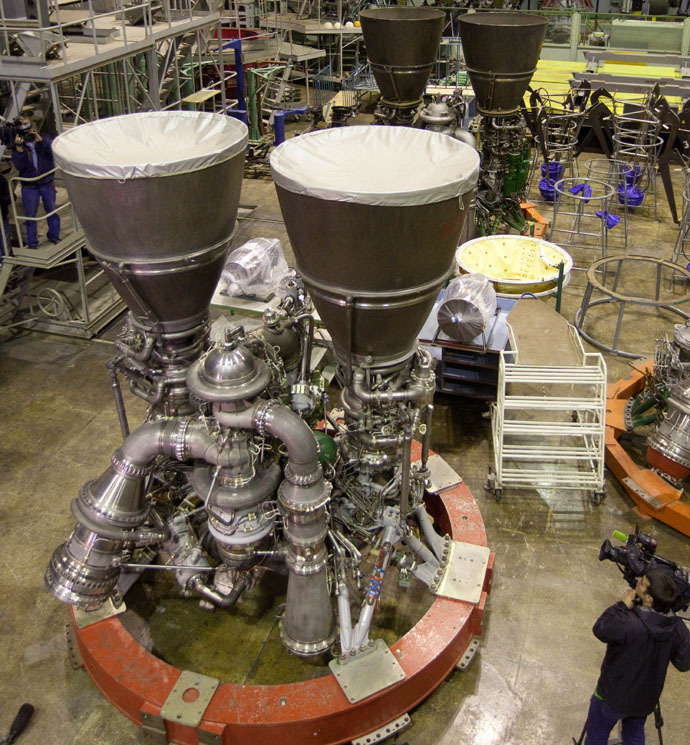
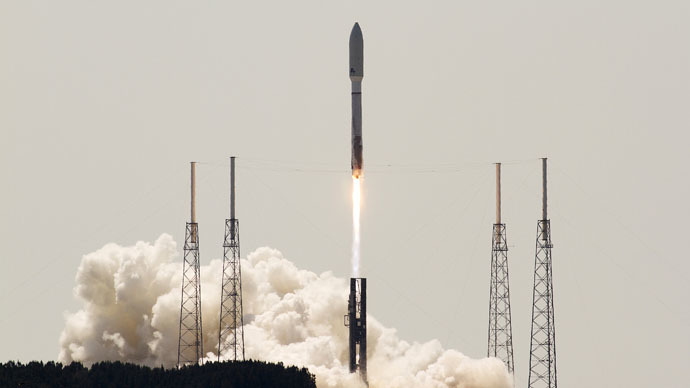
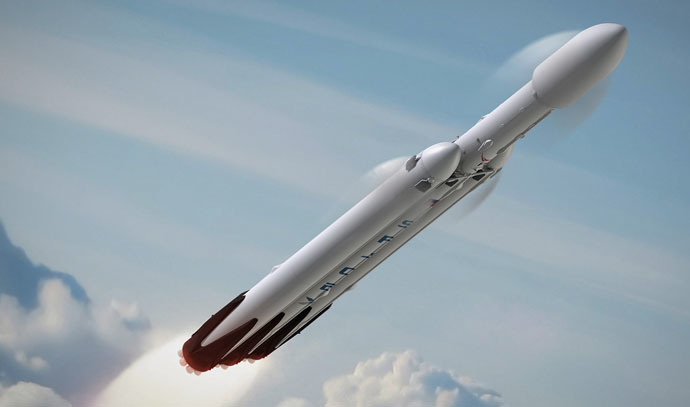
 US officials confirmed in September that
US officials confirmed in September that  The ‘
The ‘ Both the
Both the  Hollywood’s discovery of the drone wars has resulted in several
Hollywood’s discovery of the drone wars has resulted in several  Nigeria’s
Nigeria’s A number of commentators highlighted that President
A number of commentators highlighted that President  The
The 
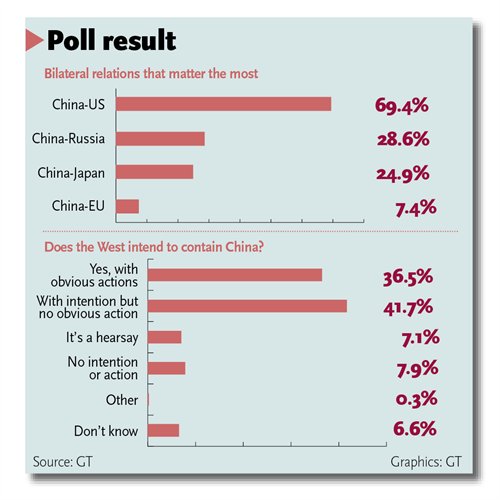


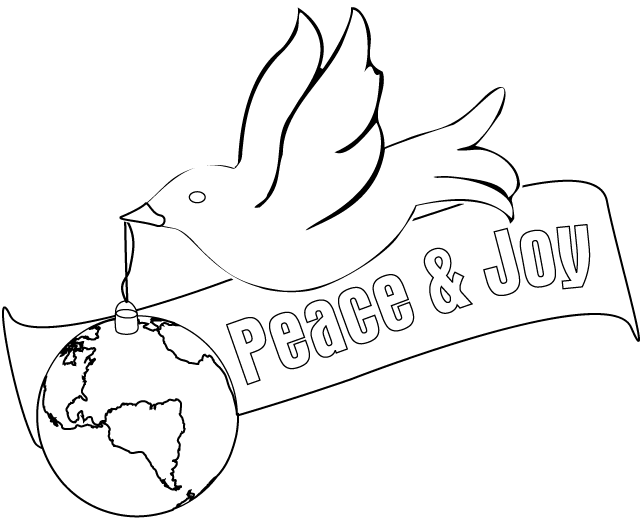
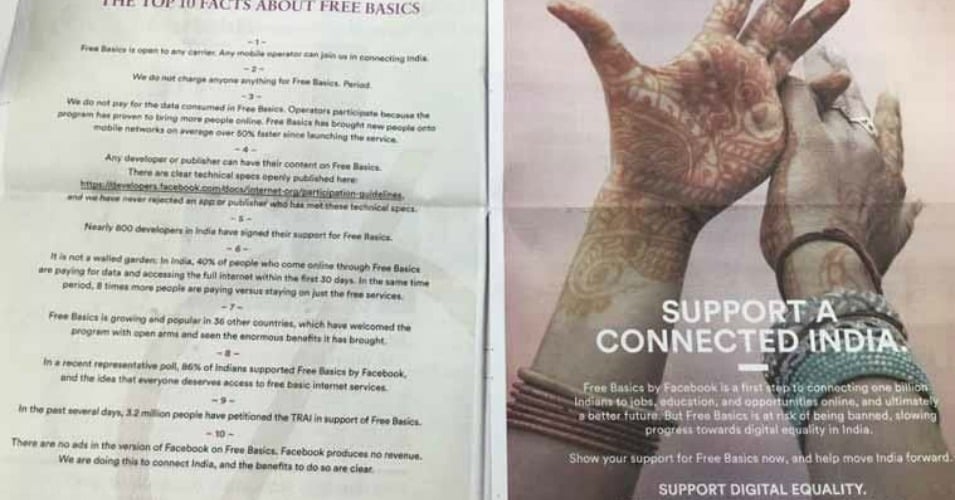

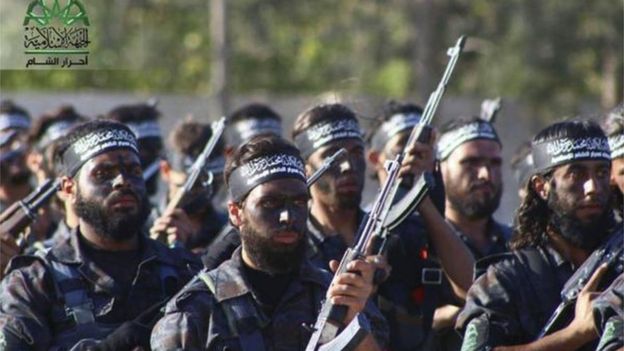












 2015 saw the publication of a number of excellent new
2015 saw the publication of a number of excellent new 
 More British drones
More British drones  The debate on whether the growing use of armed drones is an
The debate on whether the growing use of armed drones is an  Funding
Funding A new report from Corporate Watch detailed the impact of Israeli drones in
A new report from Corporate Watch detailed the impact of Israeli drones in  The USAF’s main drone training centre,
The USAF’s main drone training centre, 